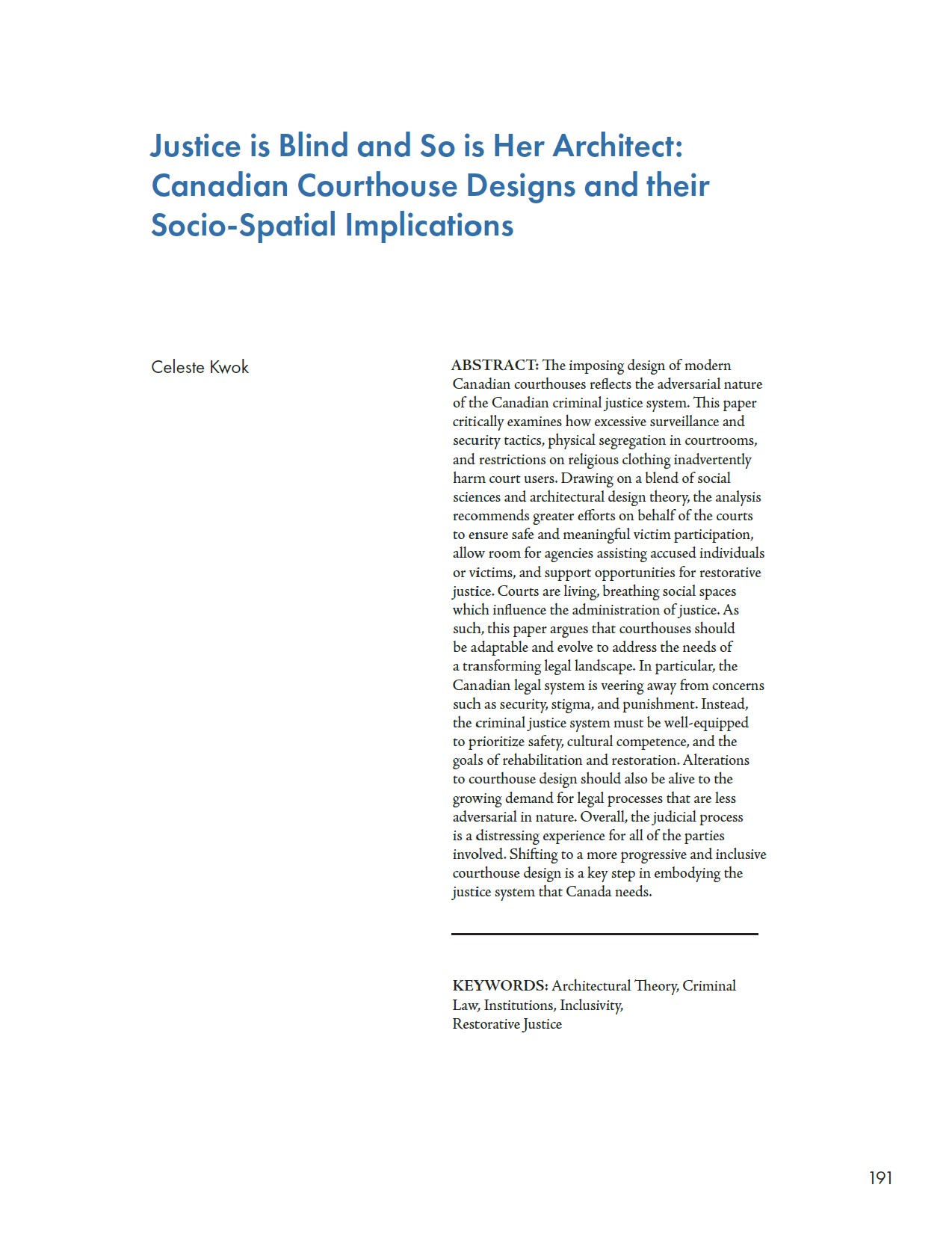Justice is Blind and So is Her Architect: Canadian Courthouse Designs and their Socio-Spatial Implications
DOI:
https://doi.org/10.29173/crossings212Abstract
The imposing design of modern Canadian courthouses reflects the adversarial nature of the Canadian criminal justice system. This paper critically examines how excessive surveillance and security tactics, physical segregation in courtrooms, and restrictions on religious clothing inadvertently harm court users. Drawing on a blend of social sciences and architectural design theory, the analysis recommends greater efforts on behalf of the courts to ensure safe and meaningful victim participation, allow room for agencies assisting accused individuals or victims, and support opportunities for restorative justice. Courts are living, breathing social spaces which influence the administration of justice. As such, this paper argues that courthouses should be adaptable and evolve to address the needs of a transforming legal landscape. Overall, the judicial process is a distressing experience for all of the parties involved. Shifting to a more progressive and inclusive courthouse design is a key step in embodying the justice system that Canada needs.

Downloads
Published
Issue
Section
License
Copyright (c) 2024 Celeste Kwok

This work is licensed under a Creative Commons Attribution 4.0 International License.

